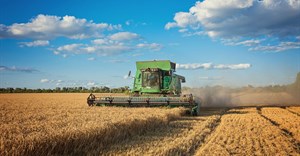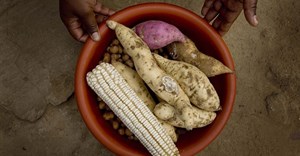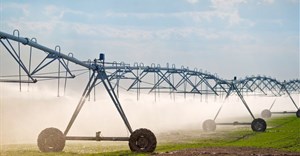
High-tech tracker to battle ancient wheat plague
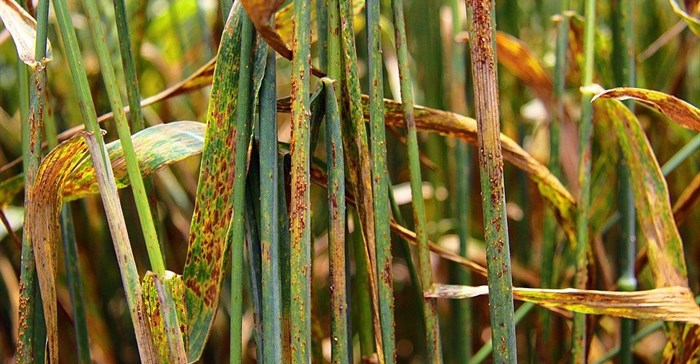
Early detection is critical
So now technology is stepping in, in the form of a pocket-sized tracking device invented by a British company with the hope that early detection can limit the damage of any outbreak. Early detection is "the most critical part" of tackling any type of wheat rusts, said Fazil Dusunceli, plant pathologist at the United Nations Food and Agriculture Organization (FAO).
Caused by fungal pathogens, the rusts can devastate the world's most widely grown crop, the source of food and livelihoods for more than one billion people in developing countries, according to the United Nations.
Key to halting the devastation is stopping its spread. "People can walk through an infected field, unknowingly pick up a few spores on their clothes, then get on a plane and accidentally take the disease to other countries or continents," said Dave Hodson, senior scientist with the International Maize and Wheat Improvement Center in Ethiopia.
...wheat rusts old and new are appearing in new countries...
"With globalisation, we are increasingly seeing this happening. In addition, wheat rusts are continually evolving so we're seeing new strains appearing all the time," he told the Thomson Reuters Foundation.
According to FAO, the risks posed by wheat rusts are growing, with modern versions of the fungus becoming ever more virulent, evolving to adapt to the earth's higher temperatures.
Alarm
There are only two ways to control wheat rust diseases - planting varieties that are resistant to rusts or using chemicals to kill the fungi. But as rusts mutate and produce new strains, resistant varieties may only be effective for a couple of years. In addition, the fungi are airborne, meaning the spores can spread rapidly over large distances.
In February, the FAO sounded an alarm, saying wheat rusts old and new are appearing in new countries, including Italy, Morocco and Scandinavian countries.
Yellow rust is considered the most economically damaging, leading to annual losses of nearly 5.5 million tonnes of wheat, according to research published in 2015. This translates into a loss of about $1bn a year, said Hodson, who is leading a technology project to tackle the rust.
Key to success is speed. The new method proposed by Hodson could cut yellow rust disease diagnosis from months to days. Currently, only specialised labs can do the diagnosis and the process could take months. "By the time we've got the answer to that question (of whether we have a potentially damaging new race), the damage could already have been done," Hodson said. "That's what we want to change."
Mobile lab
He is banking on MinION, a pocket-sized device that used sequencing technology to help track Ebola and Zika outbreaks in Guinea and Brazil by providing real-time diagnosis. Developed by a British-based firm, Oxford Nanopore Technologies, the device connects to a laptop via a USB cable, creating a mobile lab that can generate DNA sequences directly from samples collected in the field. These are then compared to a range of known DNA sequences to diagnose their particular strain of rust, with results visible in just a few days.
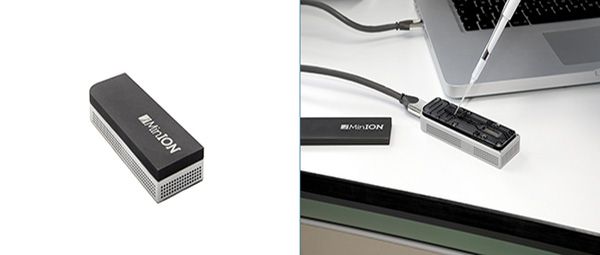
"If successful, the initial platform could be immediately deployed for yellow rust surveillance all around the world," Diane Saunders, a plant pathologist at the British-based John Innes Centre who built the database of known DNA sequences, told the Thomson Reuters Foundation.
Hodson is planning to test the device next summer in Ethiopia, where more than 500,000 hectares of wheat were affected in by yellow rust in 2010.
Deploying the device widely would not be cheap - the MinION, which weighs 100 grams, costs $1,000. However, top-end sequencing equipment costs and weighs much more, Hodson added.
Reporting By Thin Lei Win, editing by Lyndsay Griffiths.
Thomson Reuters Foundation
Source: allAfrica

AllAfrica is a voice of, by and about Africa - aggregating, producing and distributing 2000 news and information items daily from over 130 African news organisations and our own reporters to an African and global public. We operate from Cape Town, Dakar, Lagos, Monrovia, Nairobi and Washington DC.
Go to: http://allafrica.com/





